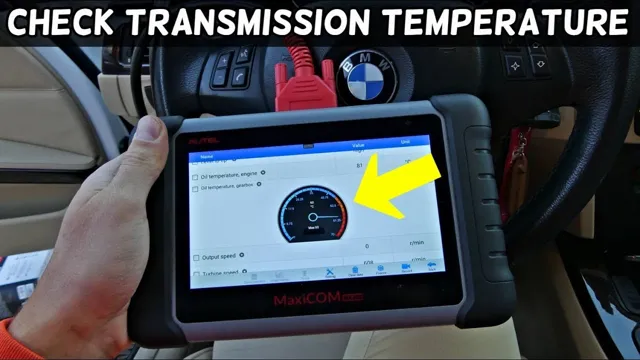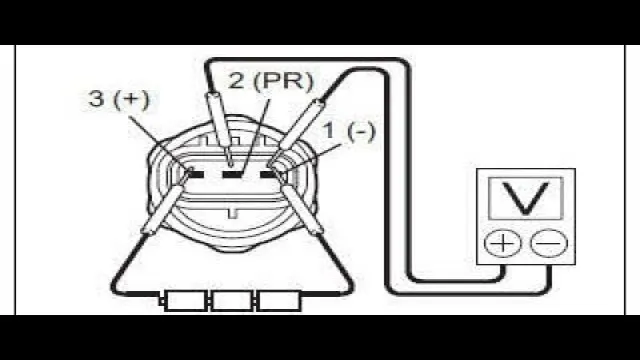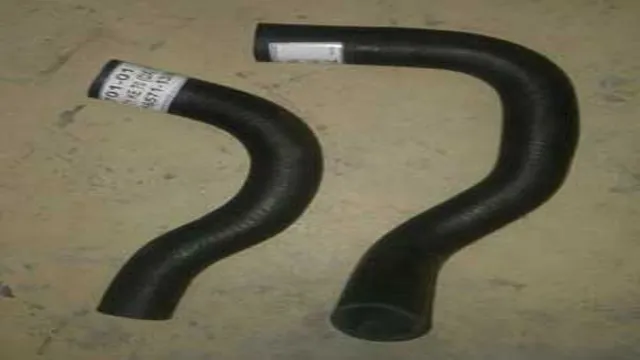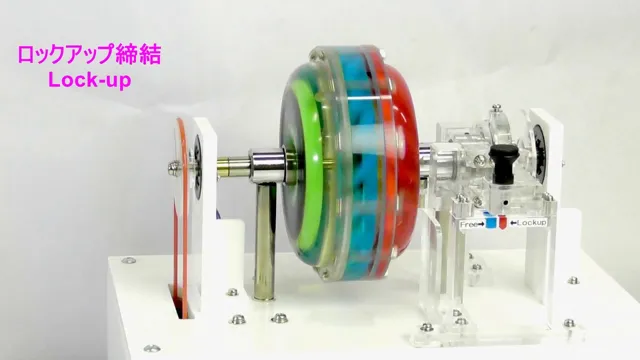Gear Up: Mastering Transmission Temperature Checking with Easy Steps
Are you worried about the health of your vehicle’s transmission? It’s important to monitor your transmission temperature regularly to avoid damage and unnecessary repairs. Lucky for you, checking your transmission temperature is a quick and easy process that can be done at home. In this blog post, we’ll take a closer look at how to check your transmission temperature and why it’s so crucial for your vehicle’s maintenance.
Think of it like taking your temperature when you’re feeling sick – monitoring your transmission’s temperature can help you catch potential problems early on and save you a lot of headaches in the long run. So, let’s get started and give your vehicle the attention it deserves!
Why Checking Transmission Temperature is Important
When it comes to taking care of your vehicle, checking the transmission temperature is an important step that should not be overlooked. Monitoring the temperature in your transmission system is vital to ensuring that everything is running smoothly and that costly damage is avoided. The transmission temperature tells you whether the transmission fluid is at the right level to keep everything working optimally.
You can easily check the temperature of your transmission by using a thermometer that is designed for this purpose. This tool measures the temperature of the fluid and helps you identify any potential problems that may be occurring. So, next time you take your car for a spin, don’t forget to check your transmission temperature to keep your vehicle in top shape.
Preventing Overheating and Damage
Preventing Overheating and Damage: The Importance of Checking Your Transmission Temperature Your car’s transmission is a crucial component that allows power to transfer from the engine to the wheels. However, if your transmission overheats, it can cause serious damage to your vehicle. This is why checking your transmission temperature regularly is important.
By keeping an eye on the temperature gauge, you can prevent your transmission from overheating and potentially causing significant damage to your car’s engine. Overheating can result from a number of different issues, including low transmission fluid levels, a clogged radiator, or a malfunctioning fan. Symptoms of an overheated transmission can vary, ranging from a burning smell to strange noises coming from under the hood.
Additionally, an overheated transmission can damage the clutches and bands inside the transmission, leading to costly repairs. To prevent these issues, it is crucial to regularly check your transmission temperature. This can be done by using a transmission temperature gauge, which measures the temperature of the transmission fluid inside your car’s transmission.
Ideally, your transmission temperature should be around 175-200 degrees Fahrenheit. If it is consistently above this range, it is important to take your vehicle in for servicing. In conclusion, checking your transmission temperature is a simple but essential task that can prevent costly and potentially dangerous issues from occurring.
By staying aware of your transmission’s temperature, you can ensure that your vehicle is running smoothly and avoid the headache of needing major repairs. So don’t neglect this important component of your car’s health – keep an eye on your transmission temperature and take action if it is consistently too high.

Tools for Checking Transmission Temperature
If you’re looking to ensure that your car’s transmission is working smoothly, it’s important to monitor the transmission temperature. Thankfully, there are a variety of tools you can use to check this crucial metric. One popular option is an infrared thermometer, which allows you to measure the temperature of different parts of your car without making contact.
Another option is a dipstick-style thermometer, which provides real-time temperature readings as you drive. Additionally, many modern cars now include built-in sensors that allow you to monitor transmission temperature through your car’s dashboard. Regardless of which method you choose, monitoring your transmission temperature is a critical step in keeping your car running smoothly and avoiding costly repairs down the line.
Using a Temperature Gun
One of the most essential tools for checking transmission temperature is a temperature gun. This handheld device is easy to operate and can accurately measure the temperature of the transmission fluid. The temperature gun works by using infrared technology to detect and measure the temperature of any surface it is pointed at.
To use a temperature gun, simply point it at the transmission pan and pull the trigger. The temperature reading will appear on the screen, allowing you to quickly determine if the transmission is operating at a safe temperature. Using a temperature gun is a quick and easy way to check the transmission temperature, and can potentially save you from costly repairs down the line.
So, if you’re experiencing transmission issues or just want to make sure your vehicle is running smoothly, investing in a temperature gun is a wise choice.
Using a Diagnostic Tool
If you’re experiencing issues with your transmission, checking its temperature can be a helpful diagnostic tool. Fortunately, there are a variety of tools available for this purpose. One popular option is a digital thermometer with a probe that can be inserted into the transmission dipstick tube.
Another option is an infrared thermometer that can read the temperature from a distance. Some vehicles even come equipped with a transmission temperature sensor that can be accessed through the OBD-II port and read with a scan tool. By monitoring your transmission temperature and identifying any abnormal readings, you can catch potential issues early on and avoid costly repairs down the road.
So, be sure to add transmission temperature checks to your routine maintenance checklist to keep your vehicle running smoothly.
Steps for Checking Transmission Temperature
Checking the temperature of your vehicle’s transmission is a simple and easy way to ensure the longevity of your vehicle’s transmission. The first step is to find the transmission dipstick and remove it from the vehicle. Then wipe it clean and reinsert it back into the transmission, making sure it’s fully seated.
Wait a few seconds before removing the dipstick again and observing the fluid color and level. Then, look for the temperature markings on the dipstick and check the current temperature. When checking the transmission temperature, ensure that the vehicle is running and in park or neutral, and the transmission has been warmed up by driving for at least 15 minutes.
Regularly checking your transmission temperature is a crucial part of maintaining your vehicle for its long-lasting and smooth performance on the road.
Step 1: Locate Transmission Fluid Dipstick
Checking transmission temperature can be a simple process if you know the right steps. The first step is to locate the transmission fluid dipstick. Most cars have a dipstick for checking transmission fluid levels, and it is usually brightly colored for easy identification.
The dipstick is typically located near the transmission, either towards the rear of the engine or near the firewall. Once you’ve located the dipstick, pull it out and wipe it clean with a cloth or paper towel. Then, reinsert the dipstick back into the transmission and remove it again.
Look at the bottom of the dipstick to check the transmission fluid level and color. If the fluid is pink or red and at the proper level, then your transmission is likely functioning well. However, if the fluid is dark or burnt smelling, it may be time for a transmission service.
Remember, regular checks of your transmission fluid and temperature can help prevent costly repairs and ensure your vehicle continues to run smoothly.
Step 2: Warm Up Engine and Transmission
One of the essential steps in checking the transmission temperature is warming up the engine and transmission beforehand. This process is crucial because the fluid in the transmission needs to circulate correctly and have a consistent temperature for accurate readings. To start, make sure the engine is at operating temperature by allowing it to run for at least ten minutes.
Then, shift the vehicle through all gears, including reverse, to ensure proper fluid flow. Afterward, place your foot on the brake and shift the car to neutral or park. Let it sit and idle for another two to three minutes to stabilize the temperature and ensure the transmission has reached optimal temperature.
By taking these steps, you will have a more accurate reading and can work towards a better overall performance from your vehicle.
Step 3: Remove Dipstick and Check Temperature
To ensure that your vehicle’s transmission stays in good condition, it’s important to check the temperature regularly. Here are the steps to follow. First, locate the dipstick for the transmission fluid.
This is usually near the back of the engine, towards the firewall. Next, start the engine and let it run for a few minutes to warm up the transmission. Once the engine has warmed up, remove the dipstick and wipe it clean with a cloth or paper towel.
Then reinsert it fully and remove it again to check the fluid level. Now look at the end of the dipstick to check the temperature of the fluid. The optimum temperature for most vehicles is around 200-220 degrees Fahrenheit.
If the temperature is higher or lower, it’s a good idea to have the transmission inspected by a professional. Checking the temperature regularly will help to prevent damage and ensure your transmission lasts as long as possible.
What Do Your Readings Mean?
Checking the transmission temperature of your vehicle is an important step in maintaining its overall health and performance. There are a few ways to do this, depending on the make and model of your car. One of the easiest ways is to use an OBD-II scanner, which can provide you with live data on your car’s temperature levels.
To do this, simply plug the scanner into your car’s OBD-II port and navigate to the temperature section in the scanner’s menu. Alternatively, you can use a digital thermometer to measure the temperature of the transmission fluid itself. To do this, first locate the transmission dipstick and remove it.
Wipe it clean, and reinsert it fully. Then, remove it and use the thermometer to measure the temperature of the fluid. The optimal temperature for your vehicle will vary depending on the make and model, so be sure to consult your owner’s manual for specific information.
Regularly checking and maintaining your transmission temperature can help extend the life of your vehicle and improve its overall performance.
Normal Range vs. Overheating
When monitoring body temperature, it is important to know what your readings mean. The normal range for body temperature is generally between 97°F-99°F, but various factors can affect this range. When your body temperature rises above this range, it’s called overheating, which can be dangerous.
Overheating can be caused by a wide range of factors such as prolonged exposure to high temperatures, dehydration, and physical exertion. Knowing your body’s normal temperature range is critical in determining if you are experiencing overheating and taking the necessary steps to prevent overheating. One indicator of overheating is a rise in body temperature by a few degrees, along with symptoms such as dizziness, headache, nausea, or fatigue.
Regularly taking your body temperature can help you understand what your normal temperature range is and identify if there are any changes that could be a sign of overheating.
Impacts of Low or High Transmission Temperature
Transmission Temperature Transmission temperature readings can be an indication of how well your transmission is operating. Low transmission temperature readings could mean that your transmission is not reaching optimal operating temperatures and may be inefficient. This could cause problems with the transmission fluid viscosity and lead to added wear on the transmission’s components.
On the other hand, high transmission temperature readings could be a sign that your transmission is overheating and may be at risk of damage. High transmission temperature readings could be caused by low transmission fluid levels, blocked transmission cooler lines, or a malfunctioning transmission cooler. It’s important to monitor your transmission temperature readings regularly and to address any issues promptly to avoid costly transmission repairs.
If you notice abnormalities in your transmission temperature readings, it is best to consult with a professional mechanic for a thorough inspection and diagnosis.
Conclusion
Checking your transmission temperature may seem like a daunting task, but it doesn’t have to be. Just like taking your own temperature, the key is a reliable thermometer and a little bit of patience. With the right tools and a keen eye, you can easily ensure that your transmission is running at the proper temperature.
So, be sure to keep an eye on that temperature gauge and don’t let your car get too hot to handle!”
FAQs
What is the normal transmission temperature range?
The normal transmission temperature range is between 175°F to 200°F.
How can I check my transmission temperature?
You can check your transmission temperature by using an infrared thermometer or by checking the temperature gauge on your dashboard.
What happens if my transmission gets too hot?
If your transmission gets too hot, it can cause damage to the transmission components and can lead to costly repairs or even transmission failure.
How can I prevent my transmission from overheating?
You can prevent your transmission from overheating by making sure your transmission fluid is at the correct level, using a transmission cooler, and avoiding heavy loads or hard acceleration for extended periods of time.







